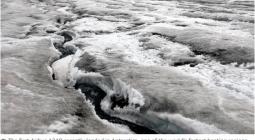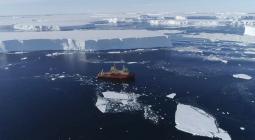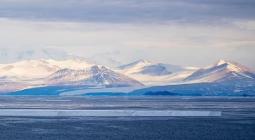Time tunnel: why an Australian expedition is drilling through 2.6km of Antarctic ice
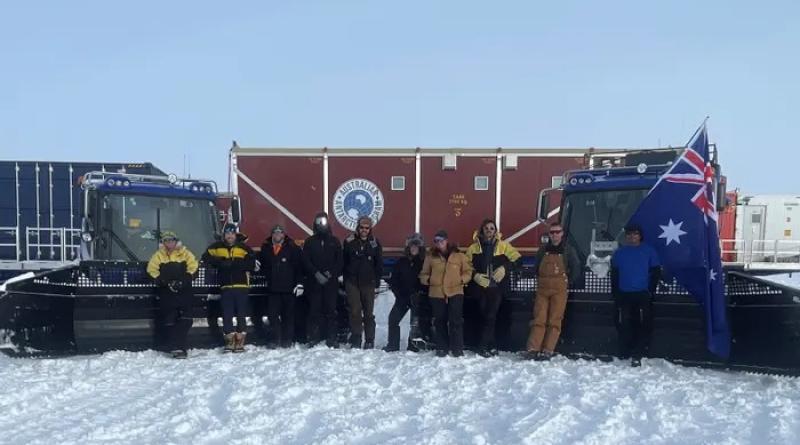
Ancient air trapped deep below the surface could unlock secrets of the Earth’s past and help understand what lies ahead as CO2 in the atmosphere keeps rising
When it reaches about 2.6km beneath the Australian camp at Antarctica’s Little Dome C, the drill will hit ice with tiny pockets of air about 1.5m years old.
The last time those molecules were in the planet’s atmosphere, our human ancestor homo erectus was just working out how to harness fire to cook and stay warm.
Humans – us – were still more than a million years away from emerging on the earth. But it’s the world’s climate crisis, sown by homo sapiens, that is bringing science to this place.
Ice this old will unlock secrets of the Earth’s past and refine scientific understanding of what lies ahead as CO2 in the atmosphere from fossil fuel burning keeps rising.
At about 6pm on Tuesday, a team of 10 expeditioners from the Australian Antarctic Division (AAD) arrived at the site, 3,200 metres above sea level, after a 1,200km 19-day traverse from Casey station, to start drilling for the world’s oldest ice.
“We stopped about 500 metres before because we wanted to walk in and make sure we didn’t contaminate the drill site. It was minus 30 but the wind was light,” says Sharon Labudda, the leader of the traverse, speaking to Guardian Australia from the passenger seat of a snow groomer.
Two snow groomers had set off on the 23 December, clearing a path across untraversed ice and snow for five tractors dragging sleds of tents, fuel, supplies, accommodation blocks, fridges and drilling gear.
Almost no life was seen on the trip, aside from one or two snow petrels and a gull-like skua “that came right up and looked into the cabin”.
What was the reaction when the team arrived?
“I still can’t believe it,” says Labudda, an engineer who has worked in Antarctica every year – except one – since the summer of 2002-03.
“We were prepared to get close but not make it. I’ll never forget everyone’s smiles when we did.”
The team – part of Australia’s Million Year Ice Core project – had special dispensation to have champagne, washed down with some eye fillet, as a celebration. But there’s been little downtime.
Already, the team have been out using hand-coring tools to extract four short and shallow ice cores to examine the chemistry of the ice.
In less than two weeks, the team will journey back to Australia’s Casey station before temperatures drop further.
“It will get very cold. Next week the temperatures will get to minus 40. If we stayed any longer, it gets to minus 50,” says Labudda, gazing out the window of the snow groomer across a flat, white, magnificent landscape.
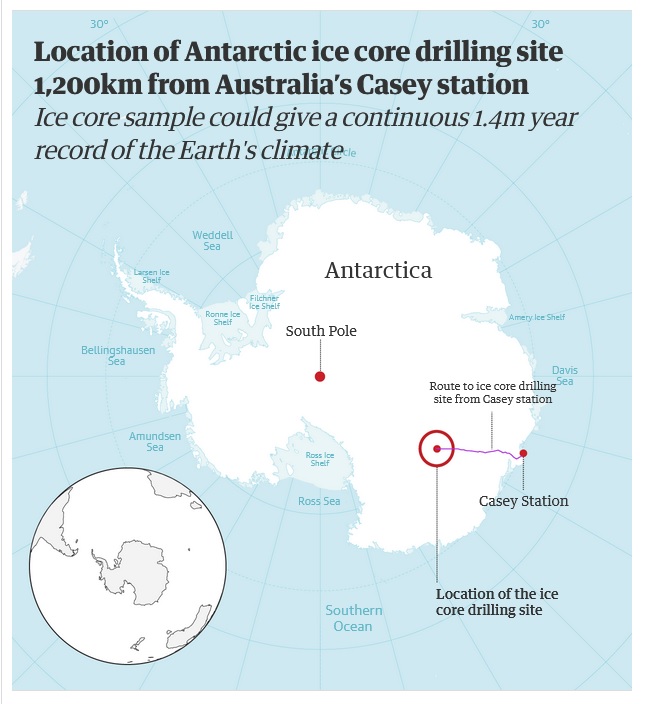
Epic science
Australia’s site at Little Dome C is 4km from a parallel ancient ice-drilling effort from a 10-country team called Beyond Epica (that team met the Australians at an intersection of their route, bringing an Australian flag with them).
The idea to hunt for ice at least a million years old was first raised a decade ago, and the Million Year Ice project has been in the planning for six years.
For the next four or five years, a special drill designed at the AAD will slice through the ice pulling up 3-metre cores at a time until the drill hits bedrock, almost 3km down.
The oldest ice core ever drilled came from Dome Concordia, about 35km from the Australian site, with ice 800,000 years old.
The Australia effort hopes to pull out ice that gives a continuous record of the Earth’s climate going back 1.5m years.
At about 2.4km, “we will be getting ice that’s new to science”, says Dr Joel Pedro, lead scientist for the Million Year Ice project. “We’ll get to 1.4 or 1.5m years at about 2.6km.”
At depths like this, as much as 18,000 years of the Earth’s climate history gets compressed into a single metre of ice. On the current schedule, Australia will hit that depth in about 2027.
“Our modelling has at least 1.4m continuous years. It’s considered one of the great challenges of ice core science and more broadly climate science,” says Pedro.
“If we look at what we learned from the 800,000 year ice core at Dome Concordia, that’s been central to our understanding of the human influence on the atmosphere.”
Scientists that study ancient climates use what are known as proxies – such as tree rings, coral cores and ocean sediments – to work out what conditions were like on earth in the past.
But the air trapped in the ice cores are not proxies, but an actual sample of air – including the levels of CO2 – trapped and preserved for millennia.
“It’s like a perfect little vial of air,” says Pedro. “The Antarctic ice sheet is also the cleanest air in the world so it’s the perfect place to do it.”
From the air samples, scientists will be able to see the composition of the atmosphere and the temperatures at the time the snow was falling. Impurities like dust and salt in the ice can reveal how stormy conditions were, and elements like krypton, xenon and neon can help reveal ocean temperatures.
One mystery the ancient ice could solve is what drove changes in the ice age cycles. Pedro says ice that old will help to refine climate models and the calculations on how sensitive the planet’s temperature is to carbon dioxide.
But the journey to the site has been epic and pioneering in itself, says Pedro. The last time an Australian team went this far inland was 1962, but they had air support.
“I’ve been holding my breath about whether we would even make it to the site. I’m astonished that we have.
“The long-term aim is the science, but the Antarctic division has pulled off this traverse that’s pretty epic compared to anything Australia has done before.”
The project has taken six years of detailed planning. Tim Lyons, traverse capability project manager at the AAD, has been waiting for the daily late night “sit rep” email from the team before sleeping.
“We’ve never put a traverse of this size together before,” he said “To have a successful traverse so far inland and reach our destination at the first attempt – I think that shows our capability. It’s a bit like a ship’s maiden voyage.”
The idea to go chasing the world’s oldest ice was included in a 2013 report from Dr Tony Press, the former AAD director and Antarctic scientist who set out what Australia’s priorities on the vast continent should be.
The traverse itself was an “incredible and remarkable logistical achievement”, said Press, where “so many things could have gone wrong”.
“The team need to be very proud of what they’ve done. We all should recognise that achievement.”
Ice cores were “like a Tardis for climate science” reaching back into ancient history, Press said.
“They put you there. You have physical possession of the atmosphere as it was then. That is mind blowing.”
COVER PHOTO: Australian Antarctic division set to drill for oldest ice on record after 19-day journey – video


